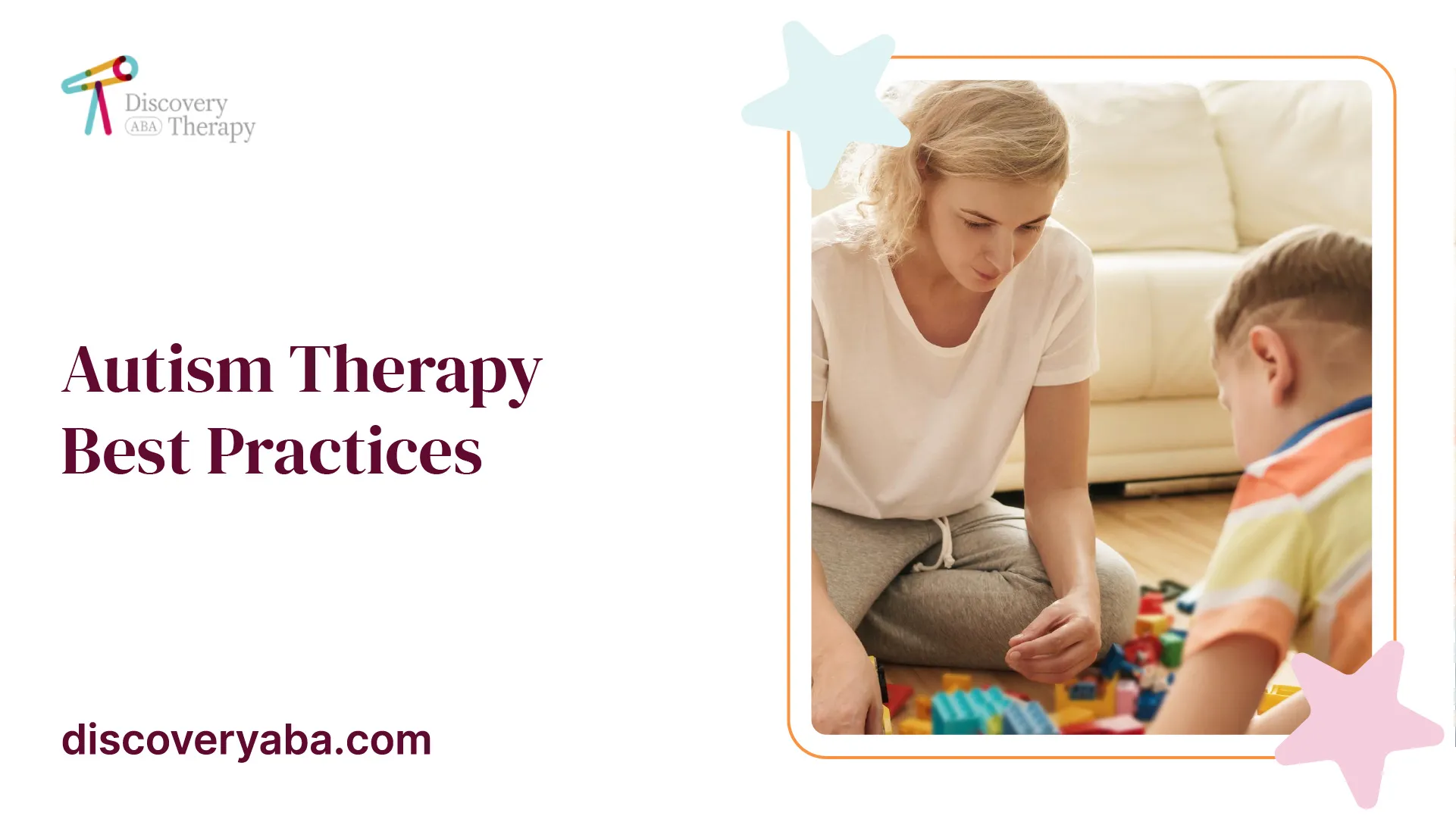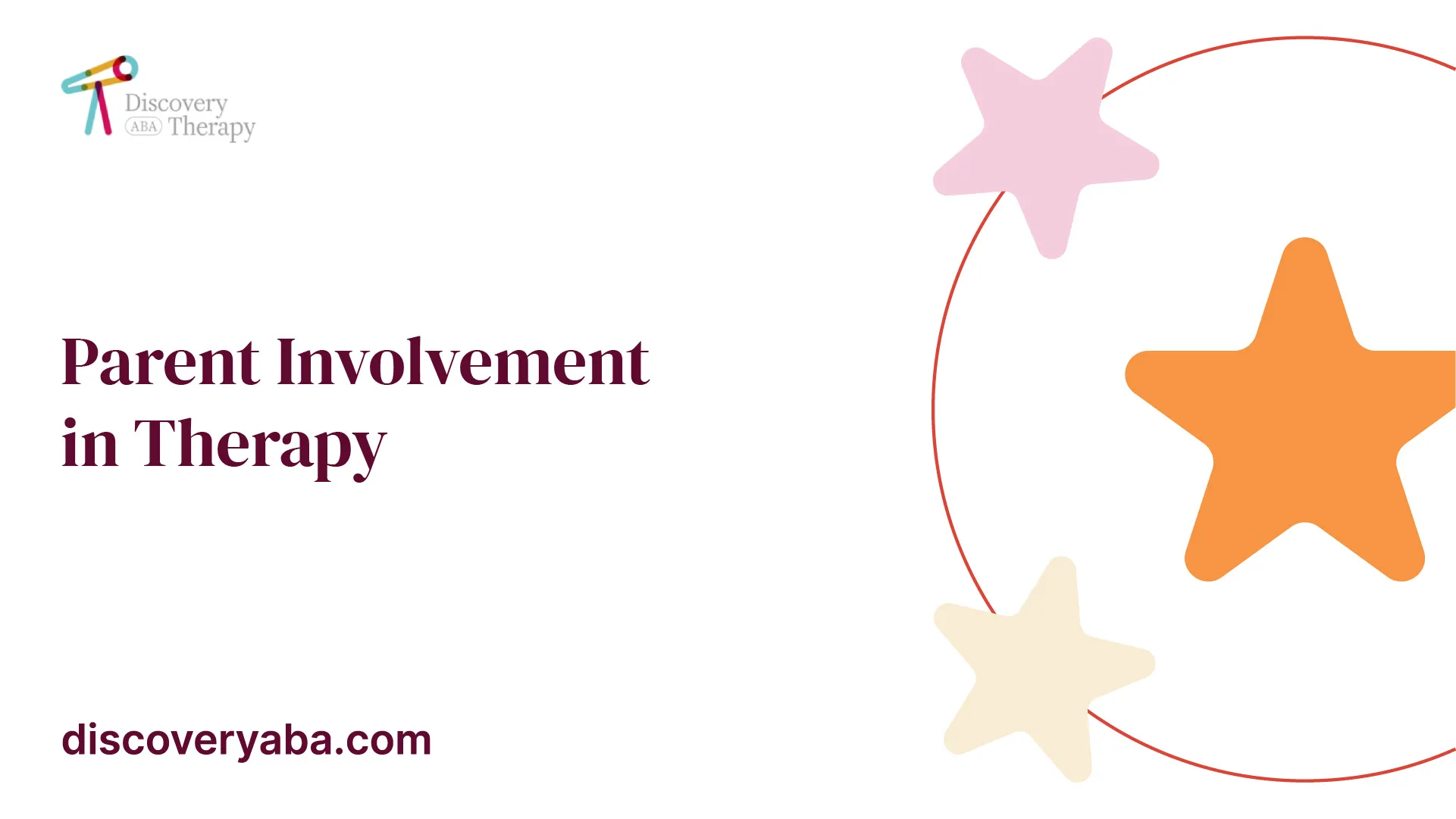Autism Therapy Best Practices
Discover autism therapy best practices for effective interventions and support for families and caregivers.

Autism Therapy Approaches
The approaches to therapy for autism continue to evolve, with significant advancements in treatment methods that cater to the unique needs of individuals on the autism spectrum. This section covers innovative therapies and targeted drug treatments that show potential for enhancing quality of life.

Innovative Therapies for Autism
Innovative therapies are at the forefront of autism treatment, highlighting the importance of research and technology in improving the lives of those affected. Recent advancements include the exploration of CRISPR-Cas9 technology and the development of targeted therapies, such as Nirsevimab. These therapies aim to enhance social interaction, language skills, and overall functioning.
A notable example is Balovaptan, which modulates oxytocin receptors in the brain. In a phase 2 study involving nearly 500 adolescents and adults, this drug demonstrated a 15% improvement in social interaction and better recognition of emotional expressions compared to a placebo [1].
TherapyImprovement in Social InteractionBalovaptan15%NirsevimabData not specified yet
Additionally, CM-AT, a pancreatic enzyme-based therapy, has been associated with significant improvements in language and social interaction among children with autism, offering promising new avenues for communication support [1].
Targeted Drug Therapies
Targeted drug therapies specifically aim to address the core symptoms of autism, focusing on enhancing social skills, communication, and emotional understanding. Nirsevimab, a groundbreaking drug that influences cell division proteins in specialized brain cells, is showing promising results as a new autism treatment strategy [1].
Balovaptan’s success in improving social interaction metrics illustrates the potential benefits of targeted drugs. These advancements suggest a shift toward more personalized therapies that consider the unique experiences of individuals with autism.
Targeted TherapyKey FeaturesNirsevimabModulates cell division proteinsBalovaptanModulates oxytocin receptors, improves recognition of emotional faces
These innovative therapies and drug treatments represent crucial developments in the field of autism care. The ongoing research and evidence of their effectiveness highlight the importance of exploring new avenues for therapy that can ultimately improve the quality of life for individuals on the autism spectrum. For more details on effective autism interventions, consider our articles on autism therapy goals and autism precision teaching.

Interdisciplinary Rehabilitation Teams1
Effective support for individuals with autism spectrum disorder (ASD) requires an interdisciplinary rehabilitation team. This team consists of professionals from various disciplines who work collaboratively to provide comprehensive care tailored to meet the unique needs of each individual.
Collaborative Care Approach
A collaborative care approach emphasizes the importance of communication and teamwork among professionals, families, and caregivers. The rehabilitation team may include a variety of specialists such as psychologists, occupational therapists, speech therapists, physical therapists, and educators. Each member plays a critical role in creating an individualized treatment plan that addresses specific goals and therapies.
Through consistent collaboration, the team can ensure that all aspects of the individual’s development are considered. This integration of services supports holistic treatment, which has been shown to be essential for meeting the rehabilitation needs of children with ASD [2].
Comprehensive Services
The comprehensive services provided by interdisciplinary teams cover various therapeutic needs, including:
A table below outlines some of the key roles and services provided by an interdisciplinary rehabilitation team:
Therapy TypeFocus AreaGoalsOccupational TherapySkills for daily living and social interactionsIncrease independence and functional skillsPhysical TherapyMotor skills and physical fitnessEnhance mobility and coordinationSpeech TherapyCommunication skillsImprove verbal and non-verbal communication
Each state in the U.S. has specific early intervention programs designed to support children with developmental delays, including ASD, as specified by Part C of the Individuals with Disabilities Education Improvement Act [4].
By sharing expertise and resources, interdisciplinary teams can provide effective and holistic care, ultimately improving outcomes for individuals with autism and empowering families to navigate their therapy journeys.

Promising Therapeutic Interventions
In the quest for effective autism therapy best practices, two notable interventions have emerged: Transcranial Magnetic Stimulation (TMS) and Pancreatic Enzyme-Based Therapy. These therapies offer unique approaches to supporting individuals with autism.
Transcranial Magnetic Stimulation (TMS)
Transcranial Magnetic Stimulation (TMS) is a non-invasive procedure that utilizes magnetic fields to stimulate nerve cells in the brain. TMS has been explored as a potential intervention for improving social skills and reducing anxiety in individuals with autism. The therapy targets specific brain regions by delivering brief magnetic pulses, which may enhance cognitive functions and emotional regulation.
Studies indicate that TMS could lead to improvements in mood and behavioral functioning, making it a promising option for some individuals on the autism spectrum. Research is ongoing to better understand the potential benefits and effectiveness of this therapy. Given its non-invasive nature, TMS might be particularly appealing for families seeking alternative therapies for autism.
Pancreatic Enzyme-Based Therapy
Pancreatic enzyme-based therapy, specifically CM-AT, has shown significant promise in improving communication and social interaction among children with autism. In a phase 2 trial, children receiving this therapy demonstrated noticeable enhancements in language skills and social engagement compared to those who received a placebo [1].
This innovative therapy addresses digestive enzyme deficiencies, suggesting a potential link between gut health and autism symptoms. By promoting better digestion, CM-AT could improve overall well-being and facilitate better communication skills in individuals with autism.
InterventionDescriptionPotential BenefitsTranscranial Magnetic Stimulation (TMS)Non-invasive brain stimulation methodMay enhance cognitive function and reduce anxietyPancreatic Enzyme-Based Therapy (CM-AT)Treatment that improves digestive enzyme functionSignificant improvements in language and social skills
As with any emerging therapy, it is crucial for families and caregivers to consider consulting healthcare professionals to evaluate the suitability of these interventions for individuals with autism. For insights on additional autism therapy practices, consider exploring virtual reality in autism therapy or learning about supporting autism during a hospital stay.
Critical Role of Early Intervention
Early intervention plays a pivotal role in the development of children with autism spectrum disorder (ASD). It encompasses strategies that provide necessary support as soon as possible after diagnosis, significantly impacting outcomes.
Impact of Early Diagnosis
The benefits of timely diagnosis and early intervention for autism are profound. Research indicates that identifying autism spectrum disorder (ASD) early and initiating evidence-based interventions promptly lead to the best possible prognosis for the child. Children who receive early intervention, typically starting as young as 2 or 3 years old, often demonstrate remarkable improvements in communication, social skills, and cognitive development.
Age of DiagnosisIntervention DurationPotential Improvements2-3 years2+ yearsVerbal skills, self-advocacy, relationship building4-5 years1-2 yearsIndependence, self-care skills6 years and olderAny timeOngoing learning, coping strategies
Additionally, early interventions exploit the brain's plasticity during these formative years, making it easier for children to adapt and learn new skills. With effective early support, some children may even progress to a point where they no longer meet the criteria for ASD as they grow older [4].
Effective Intervention Strategies
Intervention strategies that are evidence-based and tailored to the child's needs are crucial for achieving optimal outcomes. Early interventions focus on developing essential skills like communication, social interaction, and cognitive abilities. Various methods can be employed, including:
Intervention TypeFocus AreaAge RangeApplied Behavioral Analysis (ABA)Behavioral skills2 years and upSpeech and Language TherapyCommunication skills2 years and upSocial Skills TrainingInteraction and socialization4 years and up
Timely implementation of these strategies not only aids in skill acquisition but also empowers children to manage their symptoms and enhances their chances for independent living as adults [6]. Lifelong learning is vital for individuals with autism; hence, interventions can, and should, continue as they grow.
By emphasizing early intervention, the potential for significant improvement in the quality of life for individuals with autism can be maximized. Families and caregivers are encouraged to seek out supportive resources and practices to foster growth and development in their loved ones. More information can be found on autism therapy goals and supporting autism during a hospital stay.
Parent Involvement in Therapy2
Power of Parents in Interventions
Parents play a critical role in the effectiveness of interventions for children with autism. Research indicates that parents can learn strategies that significantly enhance their child's communication and social skills [8]. The American Academy of Pediatrics recommends that parents should actively participate in their child's autism intervention. Utilizing daily routines as learning opportunities allows children to apply new skills in various everyday situations, making it easier for them to retain what they have learned.
Involving parents in autism interventions leads to improved outcomes. For example, parents who engage in consistent practice of learned strategies can observe noticeable changes in their child's behavioral responses. This collaborative approach not only fosters progress but also strengthens the parent-child bond, creating a more supportive environment for development.
Supportive Materials for Parents
Access to parent-friendly resources is essential for successful collaboration in autism therapy. Materials that describe effective strategies can empower parents to implement interventions at home. Research suggests that training for professionals to work closely with parents can further enhance the effectiveness of these interventions.
To assist parents, the following table outlines common resources that can aid in autism therapy:
Resource TypeDescriptionGuides on Communication StrategiesTips for improving language and social interactionsDaily Routine ChecklistsTools for incorporating learning into everyday activitiesVideo TutorialsVisual learning aids demonstrating effective techniquesSupport GroupsCommunity for sharing experiences and strategiesEducational WorkshopsSessions for parents to learn directly from professionals
These resources can make a significant difference in how parents support their children through autism therapies. By actively participating and utilizing supportive materials, caregivers can contribute effectively to their child's progress in therapy. For more information on setting specific goals in therapy, check our article on autism therapy goals.
Evidence-Based Treatment Options
Families and caregivers seeking effective interventions for individuals with autism spectrum disorder (ASD) often turn to evidence-based treatment options. Two widely recognized therapies include Applied Behavioral Analysis (ABA) and Occupational and Speech Therapy.
Applied Behavioral Analysis (ABA)
Applied Behavioral Analysis (ABA) is a well-established and evidence-based approach tailored for individuals with ASD. It emphasizes teaching new skills and minimizing undesirable behaviors through positive reinforcement. This therapy typically involves personalized one-on-one sessions with a trained therapist who adapts the strategy to fit the individual's unique needs and objectives.
One significant component of ABA is Early Intensive Behavioral Intervention (EIBI). This structured method is designed for young children, generally under five years of age. EIBI can require 20 to 40 hours of direct intervention per week and aims to enhance skills in communication, social interaction, and adaptive behaviors. Research indicates that this intensive engagement can provide notable benefits for children with ASD, facilitating their development [3].
ABA ComponentDescriptionIntervention TypeOne-on-one sessionsAge GroupPrimarily for children under five in EIBIHours per Week20 to 40 hours in EIBIFocus AreasSkill development in communication, social interaction, and adaptive behaviors
Occupational and Speech Therapy
Occupational Therapy (OT) plays a vital role in supporting children with ASD to develop essential skills necessary for play, self-care, academic activities, and social interactions. OT often incorporates sensory integration therapy, which helps individuals manage sensory processing challenges, and focuses on improving motor coordination and social skills. This therapy is tailored to enhance the overall functioning and independence of individuals with autism, addressing their specific needs.
Speech Therapy is equally crucial for individuals with autism, as it focuses on enhancing communication skills. This encompasses various aspects, including speech articulation, vocal quality, language comprehension, and expressive language. Techniques utilized often include visual supports, augmentative and alternative communication (AAC) systems, and social communication training to foster effective interaction [3].
Therapy TypeFocus AreasTechniques UsedOccupational TherapySkill development in play, self-care, and social interactionsSensory integration therapy, motor coordination trainingSpeech TherapyEnhancement of communication skillsVisual supports, AAC systems, social communication training
These evidence-based treatment options, including ABA and therapies focused on occupational and speech skills, provide a valuable framework for creating effective interventions tailored to the needs of individuals with autism. Exploring these methods can help families and caregivers improve outcomes for their loved ones. For additional resources and insights on autism interventions, consider visiting our page on autism therapy goals.
References
[2]:
[3]:
[4]:
[5]:
[6]:
[7]:
[8]:
Does Your Child Have An Autism Diagnosis?
Learn More About How ABA Therapy Can Help
Find More Articles
Contact us
North Carolina, Nevada, Utah, Virginia
New Hampshire, Maine
Arizona, Colorado, Georgia, New Mexico, Oklahoma, Texas
.avif)




































































































